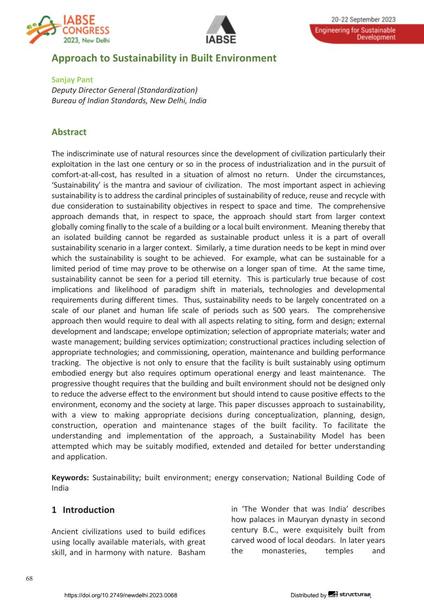|
Abstrakt:
|
The indiscriminate use of natural resources since the development of civilization particularly their exploitation in the last one century or so in the process of industrialization and in the pursuit of comfort-at-all-cost, has resulted in a situation of almost no return. Under the circumstances, ‘Sustainability’ is the mantra and saviour of civilization. The most important aspect in achieving sustainability is to address the cardinal principles of sustainability of reduce, reuse and recycle with due consideration to sustainability objectives in respect to space and time. The comprehensive approach demands that, in respect to space, the approach should start from larger context globally coming finally to the scale of a building or a local built environment. Meaning thereby that an isolated building cannot be regarded as sustainable product unless it is a part of overall sustainability scenario in a larger context. Similarly, a time duration needs to be kept in mind over which the sustainability is sought to be achieved. For example, what can be sustainable for a limited period of time may prove to be otherwise on a longer span of time. At the same time, sustainability cannot be seen for a period till eternity. This is particularly true because of cost implications and likelihood of paradigm shift in materials, technologies and developmental requirements during different times. Thus, sustainability needs to be largely concentrated on a scale of our planet and human life scale of periods such as 500 years. The comprehensive approach then would require to deal with all aspects relating to siting, form and design; external development and landscape; envelope optimization; selection of appropriate materials; water and waste management; building services optimization; constructional practices including selection of appropriate technologies; and commissioning, operation, maintenance and building performance tracking. The objective is not only to ensure that the facility is built sustainably using optimum embodied energy but also requires optimum operational energy and least maintenance. The progressive thought requires that the building and built environment should not be designed only to reduce the adverse effect to the environment but should intend to cause positive effects to the environment, economy and the society at large. This paper discusses approach to sustainability, with a view to making appropriate decisions during conceptualization, planning, design, construction, operation and maintenance stages of the built facility. To facilitate the understanding and implementation of the approach, a Sustainability Model has been attempted which may be suitably modified, extended and detailed for better understanding and application.
|

